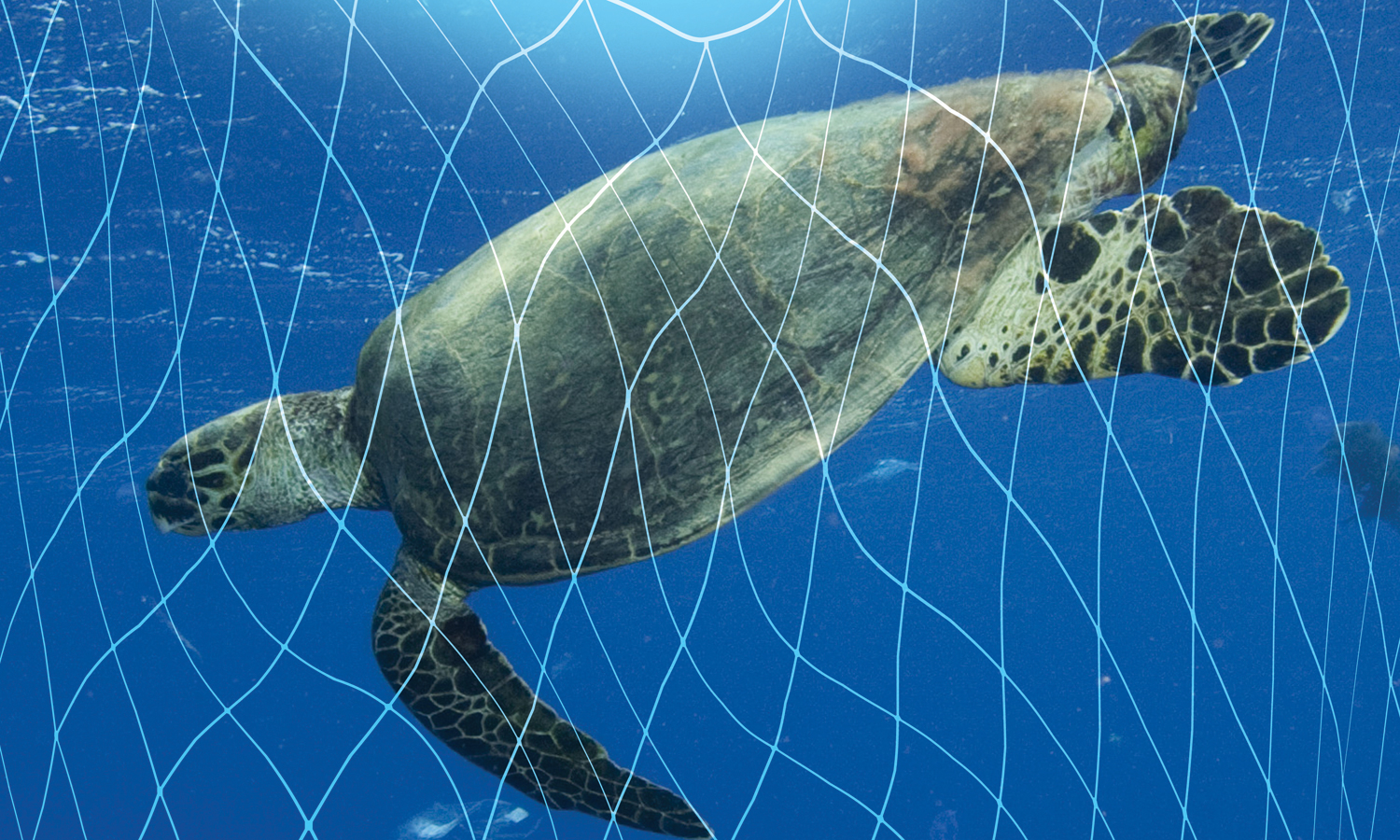

Fishing nets continue to challenge turtles in the sea.
Few days ago, 22-year-old Abdullah al Farsi was in the midst of his work at the sea on the coast of Masirah when he came to the rescue of two green turtles entangled in an abandoned net. The video of the rescue shows Abdullah working with immense speed and accuracy in setting the turtles free.
Abdullah, who is from Ras Hilf, Masirah, has been involved in fishing with his family since he was 14 years of age and up until now he has saved more than 50 sea turtles. He has always felt it was the best way to support his parents and his siblings. Since then, the sea is a natural extension of land for him and so are the creatures. When he came across the movements on the surface of the sea he knew he would have to act fast.
He was on time for the two turtles but late for the third turtle.
Within seconds Abdullah and his partners pulled the net close to the boat and snapped out the ropes of the net with a knife. Next he picked up the turtle with ease into the boat clearing the last bit of tangled net and carried it to the other side of the boat releasing it so the turtle remained far away from the floating net and moved forward while his fishing partner held onto the second turtle caught in the net. Coming back, he cut free the net for the second turtle and urged it to move on. However, tragically only the shell remained of the third turtle.
Rescuing turtles is not new for Abdullah as there have been other incidents such as the releasing of a Hawksbill turtle recently and many more in the previous years.
“I have been able to save more than 50 live turtles, but I have also found numerous other ones that were already dead by the time we found them,” Abdullah noted.
ENTANGLED IN TRAP
This is his request, “The fishermen need to take their old nets to the shore and dispose them properly, rather than leaving them in the sea to trap turtles and other wildlife.”
“In this case they removed the net, but actually there are so many old nets that it will take an organised clean-up to remove them all,” said Amelia German, a resident of Masirah since two years who is a biologist and ecologist from UK and is involved in community and environmental projects and is also researching on plastic pollution in the island and the impact of climate change on turtle nesting. She has also been able to witness turtles nesting many times at the island.
In regard to reaching on time to rescue the turtles, Amelia said, “Fishermen have very good eyesight and they detect everything at sea.” This probably could be one of the reasons fishermen can be the best ones to protect the turtles.
NESTING SITE
“Turtles live in the sea around Masirah Island all year around. They come to nest between February and September. There are four species here — the highest numbers are loggerheard turtles, Masirah used to have the highest population and they are listed as critically endangered on the IUCN red list of endangered species,” Amelia observed.
“One thing we need to have desperately and would be beneficial is to have a turtle hospital because at the moment there is nothing we can really do for sick or injured ones. There are some people in Muscat who can take care of them but it is too far for us to transport them,” Amelia added.
SEVEN SPECIES
Oman has five of the seven species of sea turtles and Masirah Island has four species, loggerhead, green, olive ridley and hawksbill. According to the Ministry of Heritage and Tourism, the green turtles are found on most of the Omani beaches and are plentiful in Ras Al Hadd, Ras Al Jinz, Masirah Island and Daymaniyat Islands; the loggerhead turtle nests on Masirah Island, the shores of Dhofar and Daymaniyat Islands; while the hawksbill turtle nests on the shores of Muscat and Daymaniyat Islands; the olive ridley turtle nests on Masirah Island; and the leatherback turtles are found in Omani waters but they do not nest in the Sultanate.
Oman Observer is now on the WhatsApp channel. Click here



